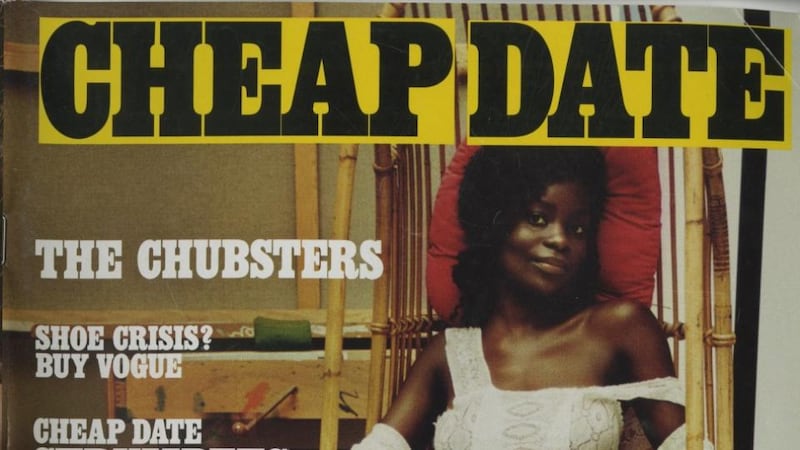Writing a profile of a woman of substance is easy to get wrong. In the effort to make a relatively unreachable subject accessible, it's too tempting to slip into grating pleasantries and nonsense hyperbole. It must be doubly daunting, then, to write a profile when the women is someone you work with. But that's the task I have been handed: to write about Bay Garnett, the contributing editor of British Vogue, renowned stylist, thrift-shopping pioneer and one of the women behind Fanpages (more of which anon), of which I am deptuy editor.
Garnett, the daughter of Irish writer and broadcaster Polly Devlin, has an impeccable Irish pedigree. Her uncle Barry Devlin was in Horslips and her aunt Marie Devlin, a writer of Irish myths and legends, was married to Séamus Heaney. She spent childhood summers in her mother's birthplace of Ardboe, Co Tyrone.
Thrifting friends

In 1997 the born-and-bred Londoner started working on Cheap Date, an underground magazine that her childhood friend Kira Jolliffe had founded. Billed as an antidote to staid style rules, this anti- establishment mag legitimised something that the fashion establishment had once found abhorrent: thrifting.
"It's all about developing your own eye, and I think if you're at that and you want to be in fashion, it's a brilliant way to start," says Garnett. "It's all very good looking at fashion magazines and seeing what everyone else is doing, but going thrifting and thinking left of field and really feeling it is a great way for you to harness your own sense of individuality and to run with it. So, for me, Cheap Date was very much about passion for second-hand clothes shops, thrifting, and being into stuff."
This potent combination of enthusiasm and style were bolstered by the magazine's cultural nous. David Mamet wrote an essay about the white T-shirt. Debbie Harry was a cover star, interviewed by Anita Pallenberg. Supermodels Erin O'Connor and Karen Elson teamed up for an editorial on the best things they had pinched backstage at fashion shows.
Garnett and Jolliffe became emblematic of a fashion counterculture that was based on a punk ethos but that was also irreverent and nostalgic.
“I did feel left out,” she says of the hyper-glossy mainstream fashion climate in the 1990s. “I did have that sense of feeling like I didn’t really fit in. And I think [Jolliffe] saw that in me. I think we saw that in each other, really.”
Strange nostalgia
Two decades later, Cheap Date is now looked upon nostalgically. The heavy weight of its legacy and the brevity of its print run (just 10 issues, all self-published) means that, while there are many fans, only a small proportion of them have actually held an issue in their hands. Modern Cheap Date fans brought up on digital platforms such as Tumblr – fans who love the idea of the magazine perhaps more than the real thing – are nostalgic for a time that they never experienced. It's a very strange kind of pining.
Perhaps with that in mind, Garnett says that she would never want to resurrect it.
“I think that we can say with all clarity that there’s nothing . . . I don’t have anything to say about thrifting,” she says. “My passion for it has dwindled.”
From Cheap Date, Garnett quickly moved on to become as a stylist for Vogue. "My first shoot was with Kate Moss and [the German photographer] Juergen Teller, using me and Anita Pallenberg's old second-hand clothes. Which then went on to be really copied, those clothes. That's the direction that my life went in."
The gap closes
As the work went on, the gulf between high fashion and thrifting began to close. "I love doing shoots, because for me I find it a really creative process, so I am loving it – and isn't life full of contradictions? And now, guess what? I love Louis Vuitton and I love Chanel. Half my wardrobe is that, and I like that. That's just the kind of person I am."
Recently, Garnett and Jolliffe regrouped for a new project, Fanpages, which collates one-shot zines by the great and the good in to one handy binding. Here, Garnett and Jolliffe have refined their thrifty sensibilities, mining gold from all-comers with more than a nod to high-fashion.
Contributors include old friends Chloë Sevigny and Karen Elson, with up and comers: Irish writers such as Róisín Kiberd and designers such as Simone Rocha. Their deputy editor is also Irish ( that's me).
“Irish people are so cool,” she says. “They just are.”

















